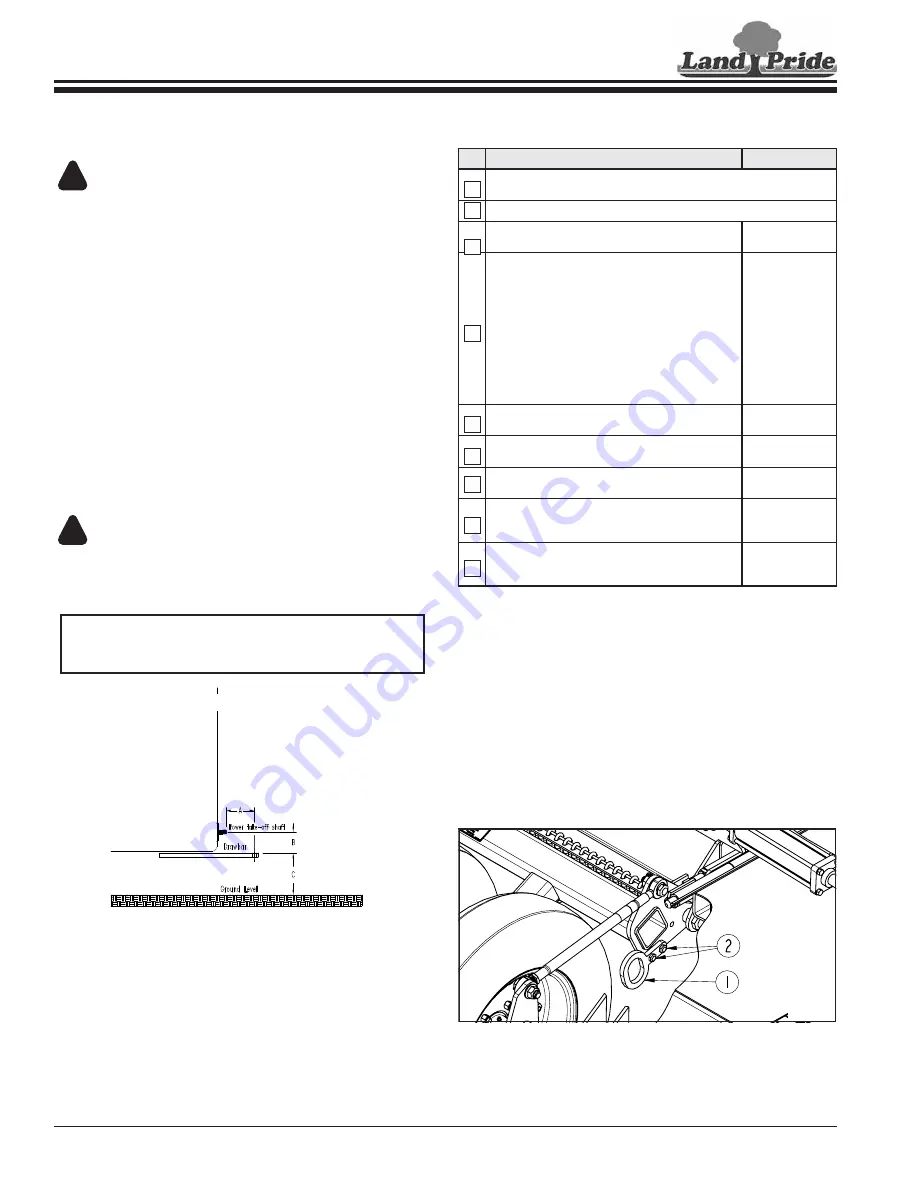
Section 1: Assembly & Set-up
11/2/18
12
Section 1: Assembly & Set-up
Torque Requirements
See
“Torque Values Chart”
page 46 to determine
correct torque values when tightening hardware. See
exceptions to common torque values.
Remove Shipping Lugs
The shipping lugs (#1) will interfere with wheels on both
sides of the center deck and must be removed.
1.
Remove and discard 1/2" bolts (#2) and shipping
lug (#1) from each side of center deck axle.
Remove Shipping Lugs
Figure 1-2
Assembly Checklist
Check
Reference
Have a fork lift or loader with properly sized chains and safety
stands capable of lifting and supporting the equipment on hand.
Have a minimum of two people available during assembly.
Make sure all major components and loose
parts are shipped with the machine.
Operator’s
Manual
Double check to make sure all parts,
fasteners, and pins are installed in the correct
location. Refer to the Parts Manual if unsure.
By double checking, you will lessen the
chance of using a bolt incorrectly that may be
needed later.
NOTE:
All assembled hardware from the
factory has been installed in the correct
location. Remember location of a part or
fastener if removed during assembly. Keep
parts separated.
Operator’s
Manual
331-101M
Parts Manual
331-101P
Make sure working parts move freely, bolts
are tight & cotter pins are spread.
Operator’s
Manual
Make sure all grease fittings are in place and
lubricated.
Make sure all safety labels are correctly
located and legible. Replace if damaged.
Make sure all red and amber reflectors are
correctly located and visible when machine is
in transport position.
Make sure all tires are inflated to the specified
psi air pressure and all wheel bolts and axle
nuts are tightened to the specified torque.
35124
Tractor Requirements
Horsepower
WARNING
!
To avoid serious injury or death:
Do not use a tractor that is too small or too large. Small
tractors can be pushed around and flipped over. Large
tractors can damage the attached implement.
Tractor horsepower should be within the range noted
below. Tractors outside the horsepower range must not
be used.
Horsepower Rating . . . . . . . . . . . . . . . . . . . 50-100 hp
Hitch Type. . . . . . . . . . . . . . . . . . . . . . . . . . .Draw Bar
Power Take-Off Speed . . . . . . . . . . . . . . . . . 540 rpm
Number of duplex outlets required . . . . . . . . . . . . . . 2
Drawbar Set-up
Maintain proper distance shown in Figure 1-1 below. Be
sure to keep 14" between center of drawbar hitch pin hole
and end of power take-off shaft.
WARNING
!
To avoid serious injury or death:
Power take-off damage may occur if distances “A” and “B”
Power Take-Off Shaft to Drawbar Distance
Figure 1-1
Before You Start
Read and understand the operator’s manual for your
cutter. An understanding of how it works will aid in the
assembly and setup of your cutter.
It is best to go through the
Assembly Checklist
before
assembling the cutter. Speed up your assembly task and
make the job safer by having all needed parts and
equipment readily at hand.
IMPORTANT:
A power take-off adapter should not
be used. Using an adapter can damage the power
take-off.
22273
A = 14"
B = 8"
C = 18" to 21"
















































